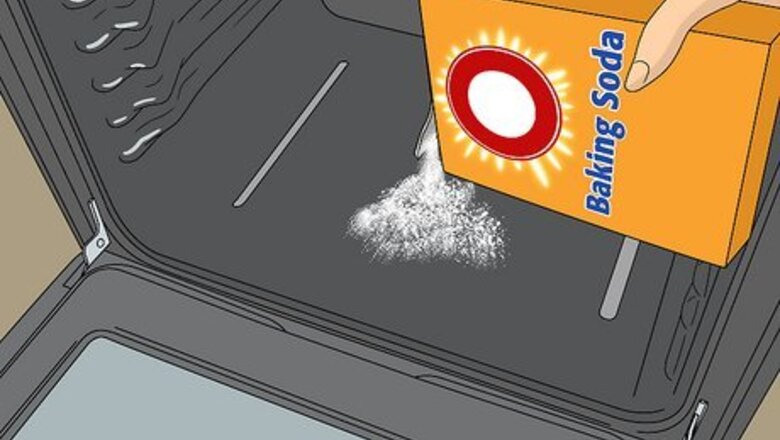
views
Applying Baking Soda to Oven Surfaces
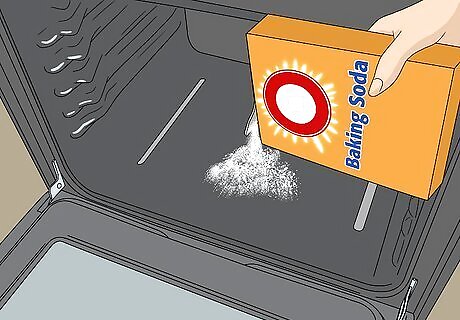
Sprinkle baking soda on a cool oven. Remove any oven racks, thermometers, or other removable elements from your cooled oven. Then apply baking soda to all stained surfaces of your oven's interior, paying particular attention to thick or greasy stain areas. Make sure that if you have used your oven recently, it is turned off and completely cooled before cleaning it with baking soda. Apply the baking soda liberally, up to ¼ inch thick in areas that are stained. For the sides and top surfaces of the oven where you can't easily sprinkle on baking soda, add enough water to the baking soda to make a paste that can be spread on to the oven surface. You can mix baking soda and warm water to make the paste.
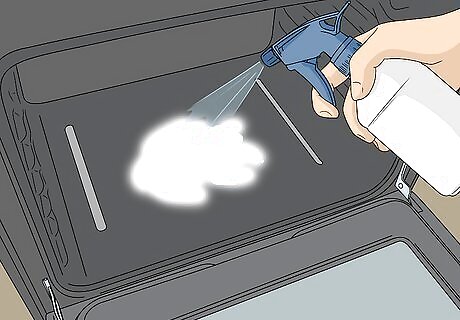
Apply water to the baking soda. Lightly pour or spray water from a spray bottle onto the baking soda-covered surfaces of your oven. Use enough water to fully saturate the baking soda. A spray of water should be enough for a light layer of baking soda, while pouring on water may be needed for a thicker coating. The goal is for a paste-like consistency, with no dry powder but no pooled water either. You may also spritz plain white vinegar over the baking soda with a spray bottle. Take care if using this method, as the combination of vinegar and baking soda creates a chemical reaction that can be explosive in large quantities. Use only a spray bottle for vinegar in this case.
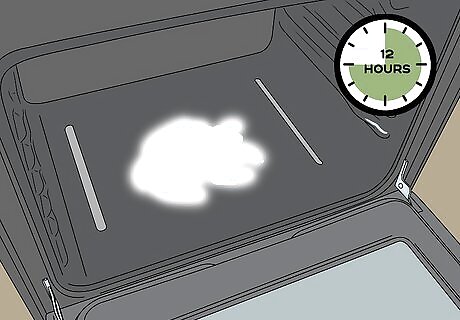
Leave the damp baking soda overnight. Allow the dampened baking soda coating to sit undisturbed in your oven. Wait for at least 12 hours or overnight before removing it. You can spritz the baking soda with water again if you find it has become dry, but otherwise you can leave the mixture alone until the next day. You'll find that the damp baking soda turns black or brown as it picks up the grease and stains from your oven. If you used a vinegar spray, the mixture will bubble. These signs are normal and show the effect of the baking soda in picking up food stains.
Cleaning Out Baking Soda and Grime
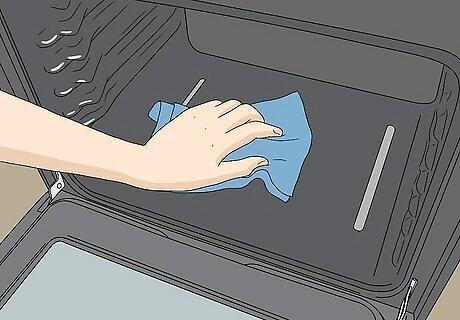
Wipe residue away with a damp cloth. After at least 12 hours, wipe away the baking soda paste and grime from your oven surfaces. Use a damp dish cloth to remove this solid residue as best as possible. You can use a plastic or silicone spatula to gently remove paste that may have become hardened or stuck in a hard-to-reach place. Don't worry about getting oven surfaces completely clean and dry in this step. Focus on removing the built-up food and residue and most of the baking soda paste.

Spray and wipe surfaces again. Spray down the oven surfaces with water and wipe away any remaining residue of food stains or baking soda with a damp or dry cloth. You can also spray white vinegar for this step before wiping down. If using vinegar, spray it lightly onto any areas that have some remaining baking soda. The mixture will foam slightly from the resulting chemical reaction. Make sure to remove all signs of baking soda as best as possible before using your oven again. Baking soda left in contact with a heating element tends to smoke badly when the oven is turned on.
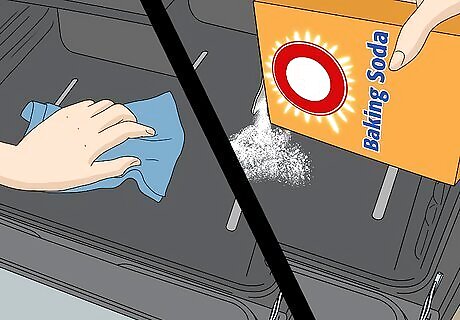
Repeat the process if necessary. Apply more baking soda and water/vinegar to let sit if stubborn stains still persist after the first application. You can apply baking soda to just the location of the stain if necessary. You can try applying baking soda directly to a wet sponge, a soft-bristled brush, or other scrubbing material to rub right on the stain for removal. If scrubbing is unsuccessful, re-treat with the baking soda paste overnight. Use another oven cleaning product if you wish, but the combination of baking soda, water, and 12+ hours to sit is typically effective for nearly all stubborn oven stains. Baking soda is great because it is abrasive enough to remove tough marks. It does not damage the material.
Cleaning Other Oven Elements
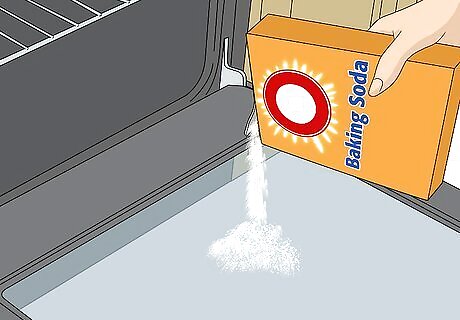
Use baking soda on the oven door. Remove stains on the inner glass of your oven door by applying baking soda and water/vinegar in the same way as you would with the other surfaces. Remember to leave the mixture on overnight or for 12 hours. Keep the oven door open and horizontal to best allow the damp baking soda to sit on stains. You may want to spot-treat stains to use less water, or apply a premixed baking soda and water paste, to avoid the possibility of the mixture getting in between oven doors that have double panes of glass.
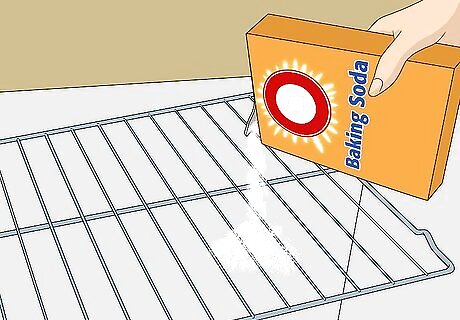
Clean oven racks with baking soda. Remove oven racks from the oven and lay them on a surface that is okay to get dirty. Sprinkle baking soda over the rack, spray on white vinegar, then let soak in hot water overnight. You can also scrub at the racks using baking soda and a wet sponge or toothbrush for smaller grates. It typically works best to soak before scrubbing. You can try soaking oven racks in a bathtub protected by old towels. Allow them to sit submerged in hot water with ½ cup of dishwasher detergent for 4 hours or overnight. This will loosen grime and make scrubbing easier, or in some cases not even necessary. Make sure to wipe down the racks with a clean damp cloth once treated with baking soda, soaked, or scrubbed, to ensure they are free from any residue before placing them back in the oven.
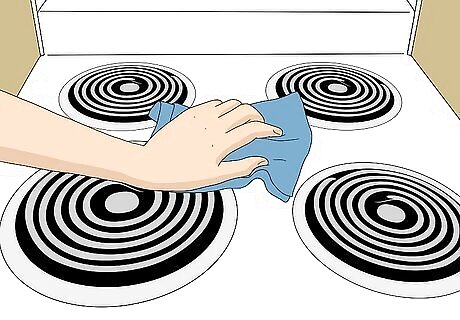
Treat a stovetop in the same way. If you have a stove-top oven, you can clean the stove surface with baking soda in the same way you would the oven. Simply let baking soda and water/vinegar sit overnight and wipe down in the morning. Remove grates if possible on a gas stove. Also note that you want to avoid allowing baking soda and water to drip down into the ignition area, so keep baking soda to a paste and apply carefully on gas stoves. Remember to wipe down the cooking surface thoroughly with a clean damp cloth once the baking soda and grime is removed, then let dry. A glass-top electric stove will smoke easily from any baking soda residue or other moisture when it is turned on.


















Comments
0 comment